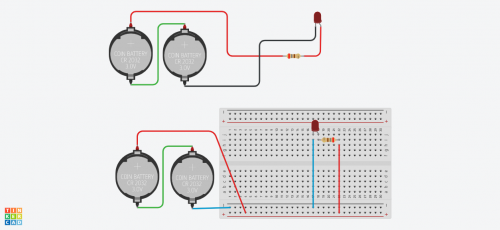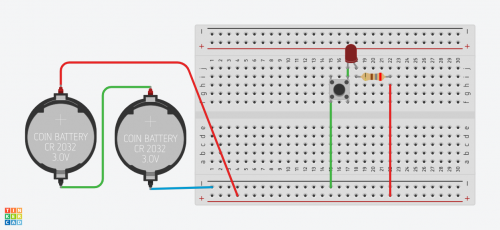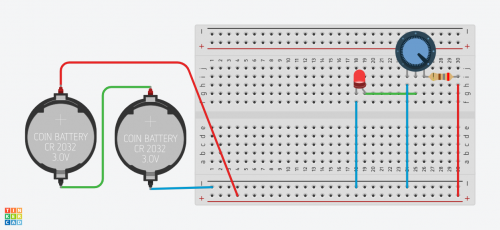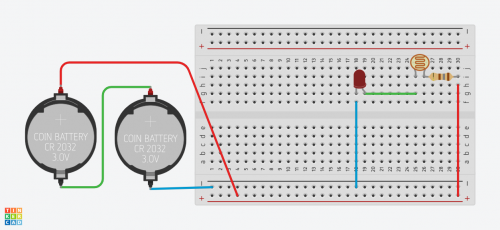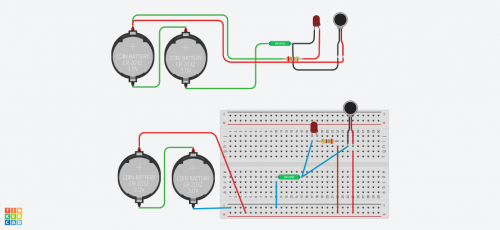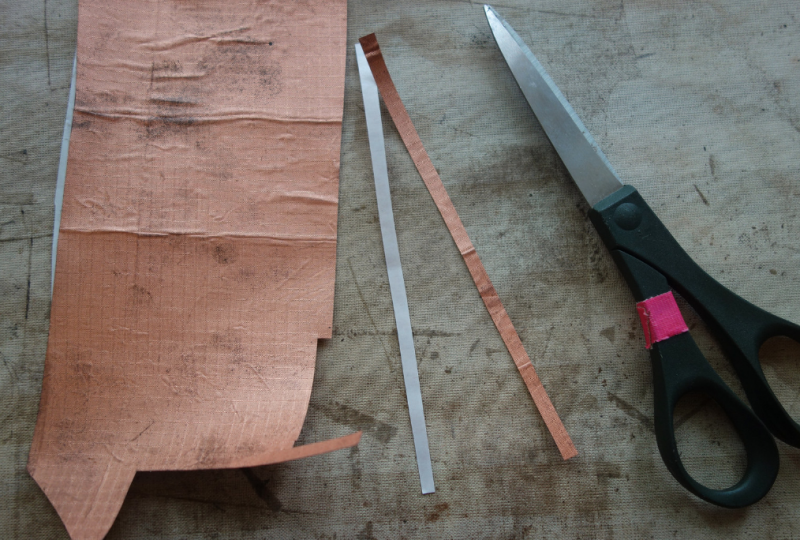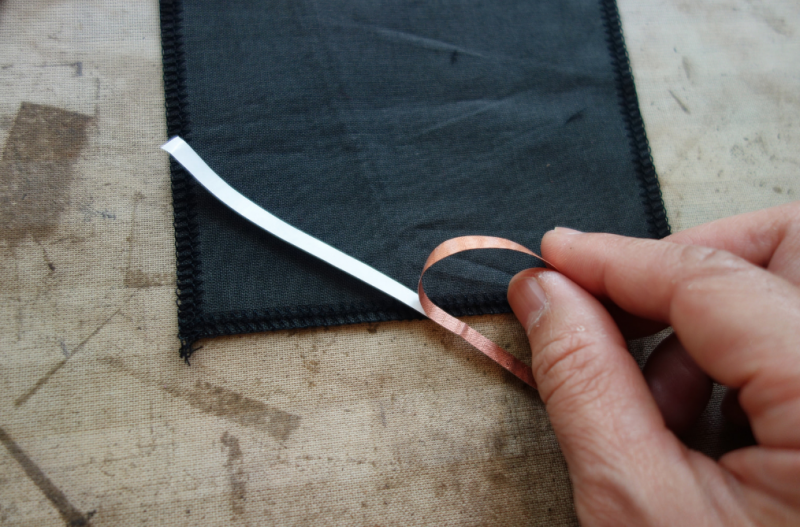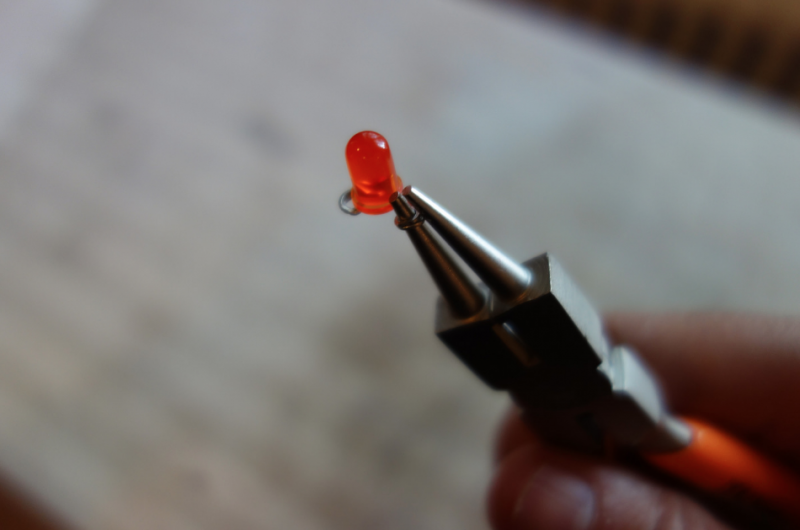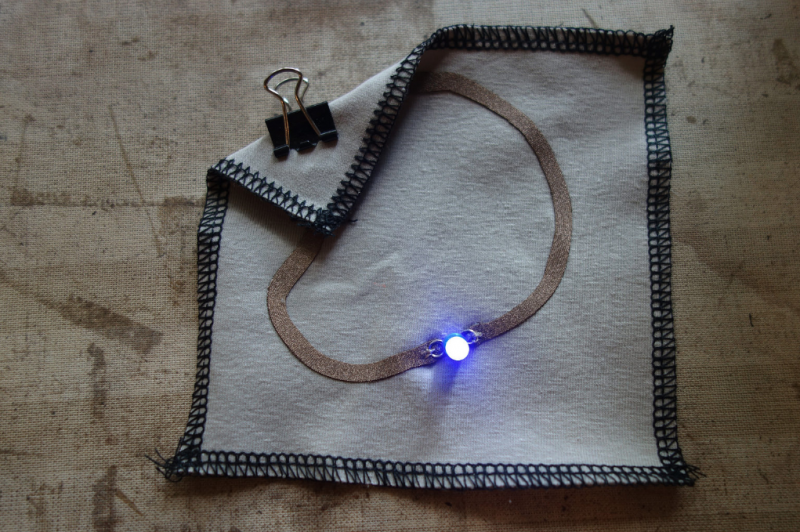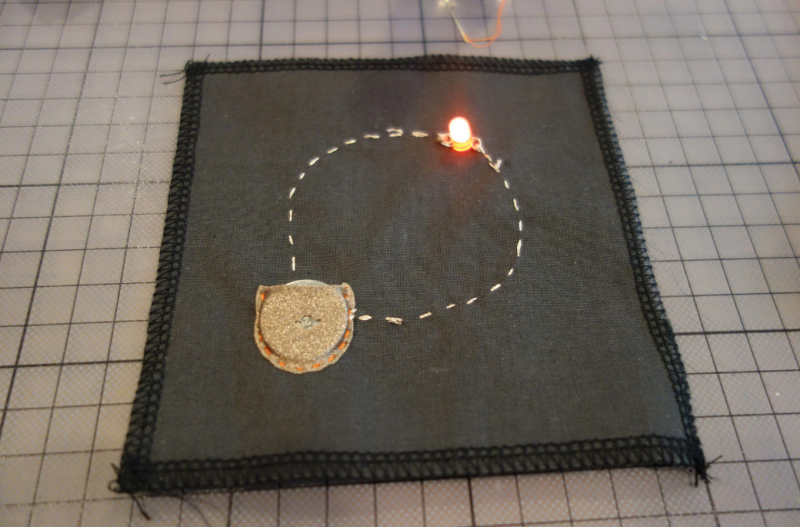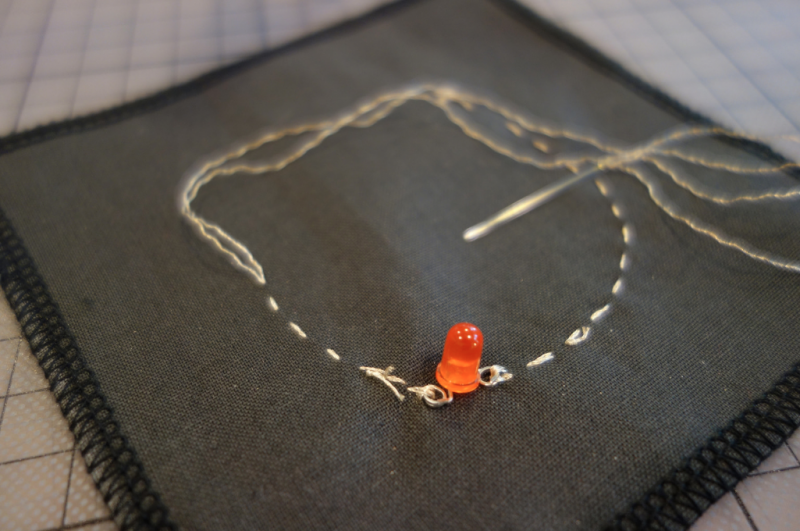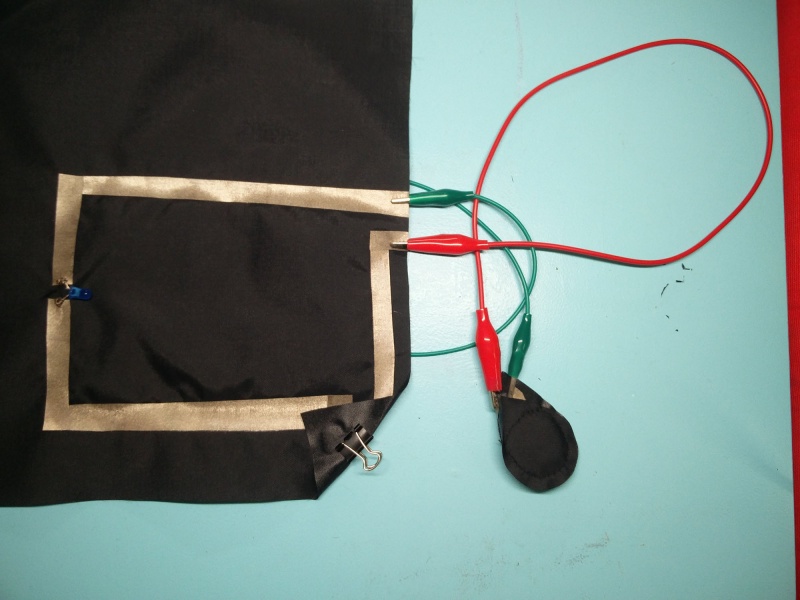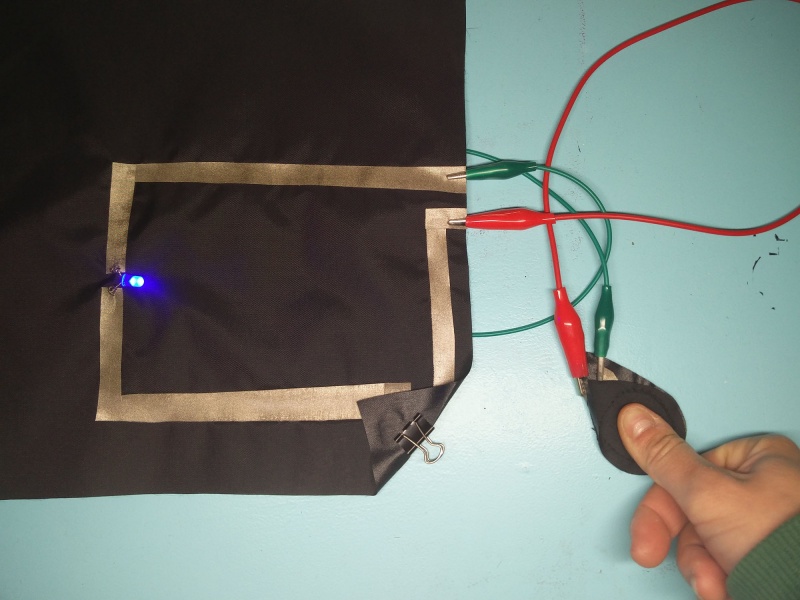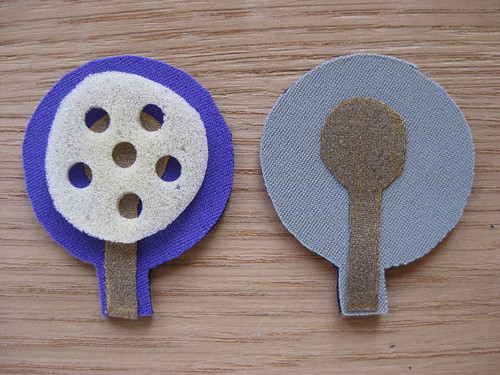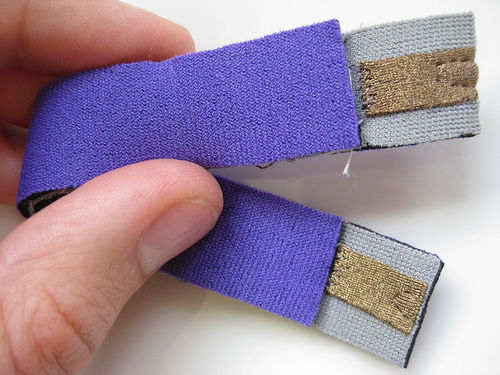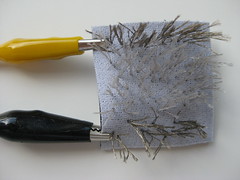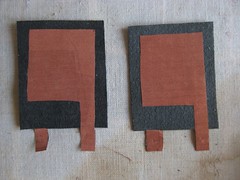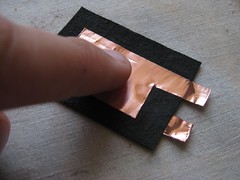Basic circuit and soft sensors
Basic circuits
Soft circuits
ets s start my making the hello world of soft and any kind of circuitry:) And use the led we talked so much about.
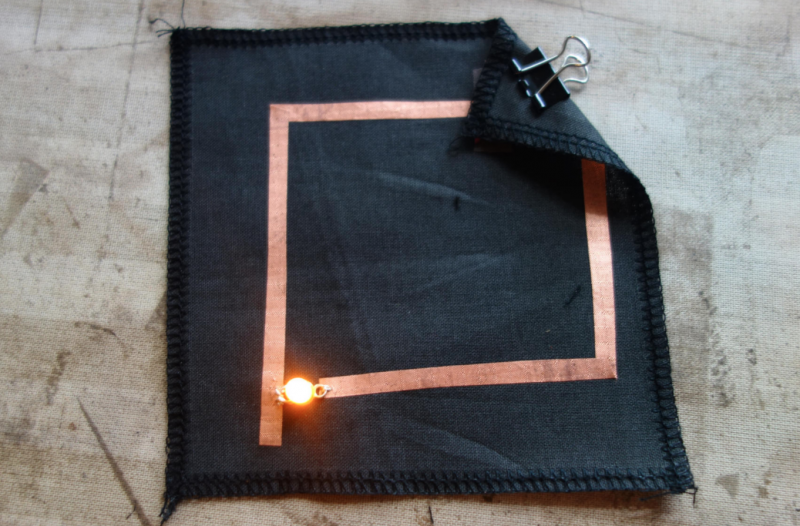
Cut conductive fabric that has fusible interfacing on one side. peel off the backing paper and place it on base fabric. Make sure the iron is set to synthetic. Most conductive fabric is delicate. And you do also rist the glue from the interfacing glue to appear of the front.
You can cut each side or fold to make corners. In both cases we need to check if all connections are right. We will use the continuity setting.
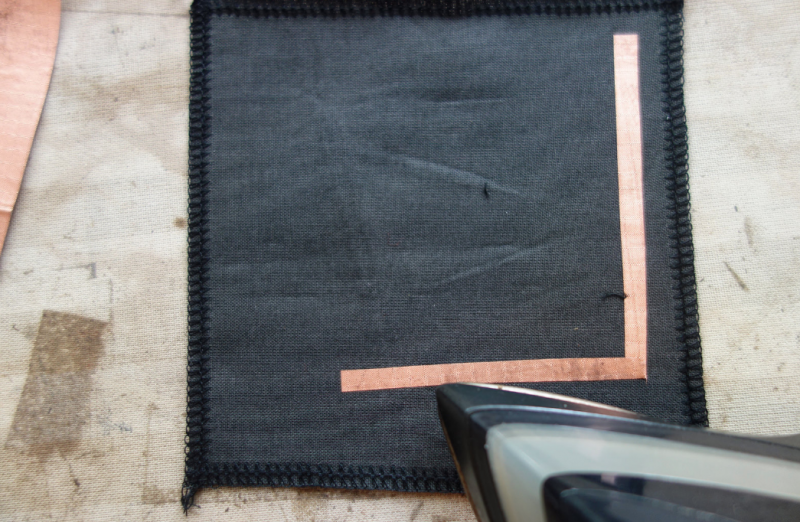
We make a rectangular shape and leave both sides open. On one side we will clamp the battery, and on the other: sew the led.
Use pliers ( best rounf ones) to bend the led legs into hooks. That way it will be easy to sew.

Then we will use a clip to hold the battery in place.

Many options are possible of course. Both in materials and design. But we have to get started,
You can also use conductive thread to make the circuit.
with button
But be fore we start. Lets make the push button.
Here is the Kobakant push button. we have this kit and we have also some vinyl cut fabric.
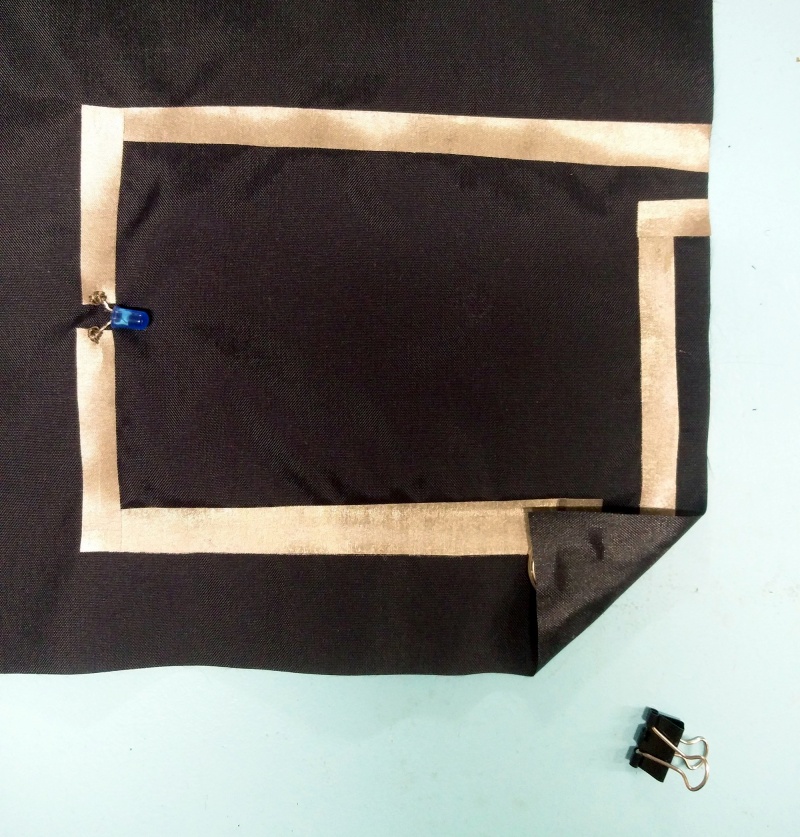
Digital sensors are the sensors that gives 2 state (on/off, 5V/0V). You will connect them to digital Pins and set it as INPUT.
Digital data consists exclusively of 0s and 1s .
For example, consider a push button switch. This is one of the simplest forms of sensors. It has two discrete values. It is on, or it is off. Other 'discrete' sensors might provide you with a binary value.
Another example of a digital sensor is an accelerometer, which sends a series of data points (speed, direction, and so on) to the Arduino. Usually digital sensors need a chip in the sensor to interpret the physical data.
Soft Sensors
1.Soft button
2. Bend
Let's start by making the sticky tape sensor. Lets tape it
We have this kit at the Station [1] and it is very easy to build on our own
3. Stroke Sensor
4. Simple Fabric Pressure Sensors
[|How to make fabric pressure sensors]
zipper switch:
{{#ev:youtube|https://youtu.be/6ViN01uwC4A}}
Softe sensors applications:
http://blog.sparkfuneducation.com/5-crafty-ways-to-make-diy-sewable-electronic-sensors
